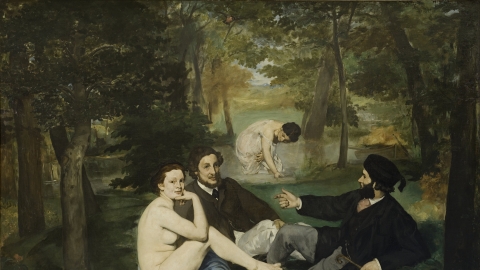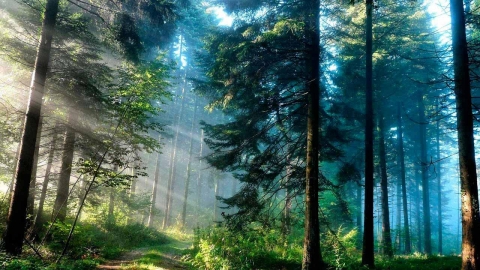Ukiyo-e paintings are a type of painting popular from the 17th to the 19th century during the Edo period (1603-1868), when Japan was almost isolated from the outside world. The themes in ukiyo-e are often associated with the lavish, indulgent life of Japanese people during the second half of the 18th century, depicting stories in history and folklore, famous landscapes or entertainment, taking place in theaters, restaurants, tea rooms and the main characters are often courtesans, kabuki actors, geisha or sumo wrestlers...
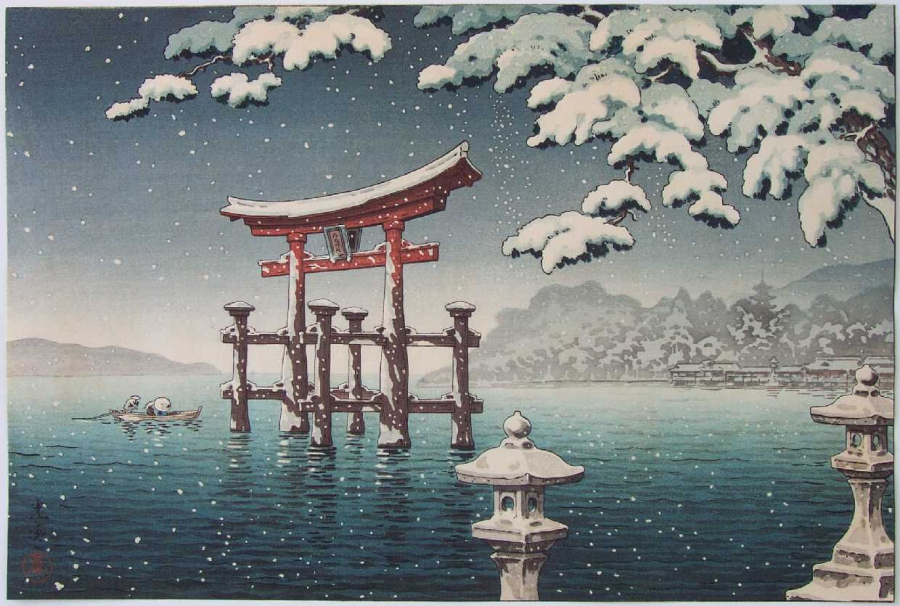
Snow on Miyajima (Tsuchiya Koitsu, 1937)
Later, many famous artists skillfully incorporated typical Japanese landscapes such as Mount Fuji, torii gates, Shinto shrines, drum bridges or fierce tsunamis into ukiyo-e paintings, bringing unique features to this art form. And just like in Japanese poetry, the subtle changes of the four seasons are clearly depicted in ukiyo-e paintings.
Spring begins with gentle spring rains that melt the snow on the mountains and cherry blossoms bloom. Summer comes with heat and June rains, azaleas, insects and peonies. Autumn is resplendent with the brilliant yellow, orange and red of maple leaves (momiji). In winter, the fields and mountains turn grey as the tree branches are bare. Nature is covered in a cold, quiet white cloak of snow, and everything has an ancient beauty. The cold moon, white snow and fallen leaves are romantic images that many Japanese artists love.
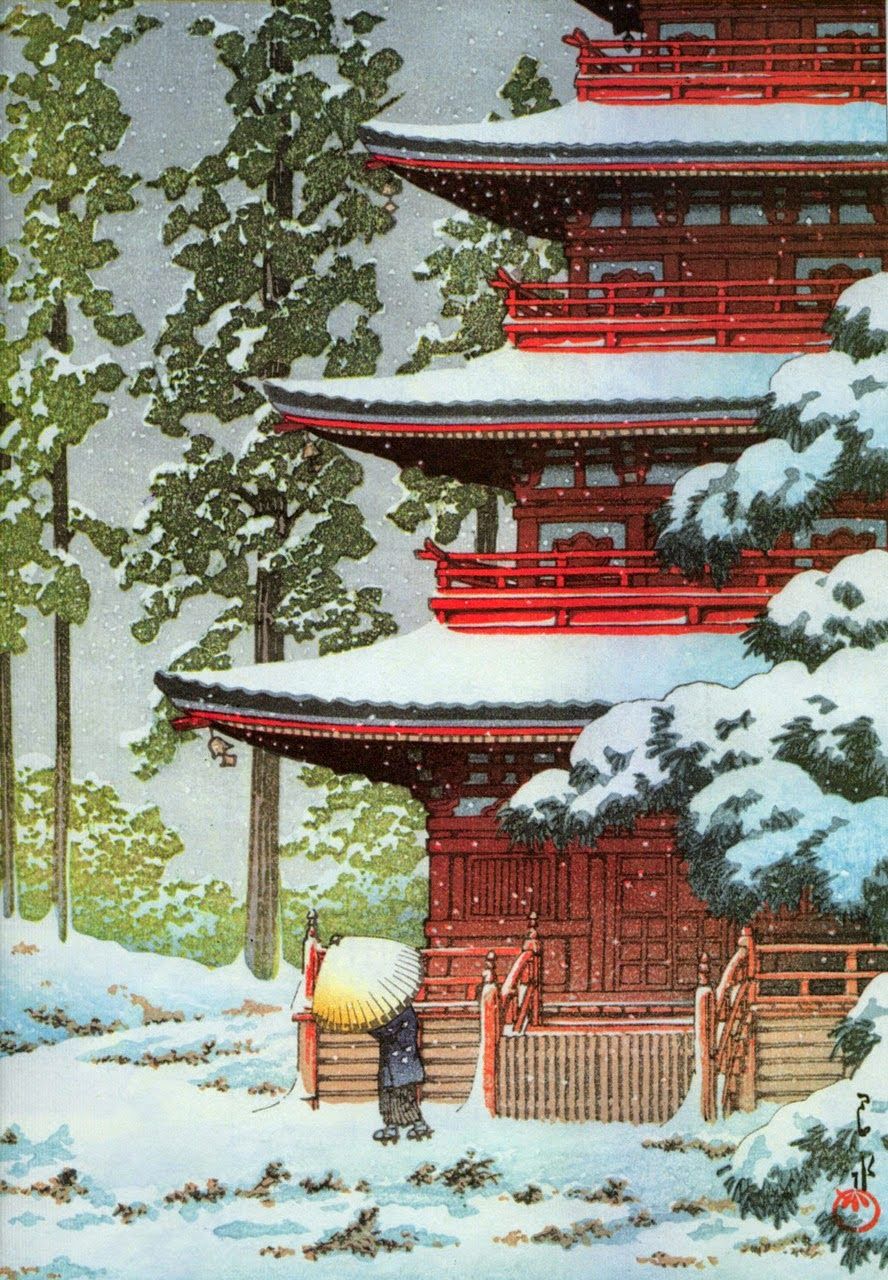
Snow Covering Saisho-in Temple (Hasui Kawase, 1936)
DrawingSnow covers Saisho-in TempleHasui Kawase's poems evoke a particularly delicate sense of winter beauty through image and color, as in Sakanoemo Iratsume's tanka poem:
On the sedge
under the pine trees
magical snow
is there any way to keep it
keep the snow from melting?
Indeed, there is poetry in painting and painting in poetry. It is therefore not surprising that ukiyo-e became widely known both in and outside Japan. Around the end of the 19th century, many European artists came across ukiyo-e paintings. They were deeply impressed by ukiyo-e's expressive curves, rich use of color, and free, uninhibited compositions. Until then, European and American artists had never encountered the types of techniques used by ukiyo-e artists. And the ukiyo-e style exerted a great influence on Impressionist painters such as Vincent van Gogh and Claude Monet.
Utagawa Hiroshige was one of the most notable ukiyo-e artists in Europe at the time, especially for Impressionism: Claude Monet was inspired by Hiroshige's drum bridges (taikobashi) to design his home garden in Giverny. The drum bridges, a type of bridge originating from China, are semicircular, and when combined with their reflections in the water, create the shape of a drum - an effect that Hiroshige did not achieve in his drawings.Meguro River Empty Bridge and Sunset Hillbelonging to the seriesOne Hundred Famous Sights of EdoIn this set of paintings, there are 42 spring drawings, 30 summer drawings, 26 autumn drawings and 20 winter drawings.
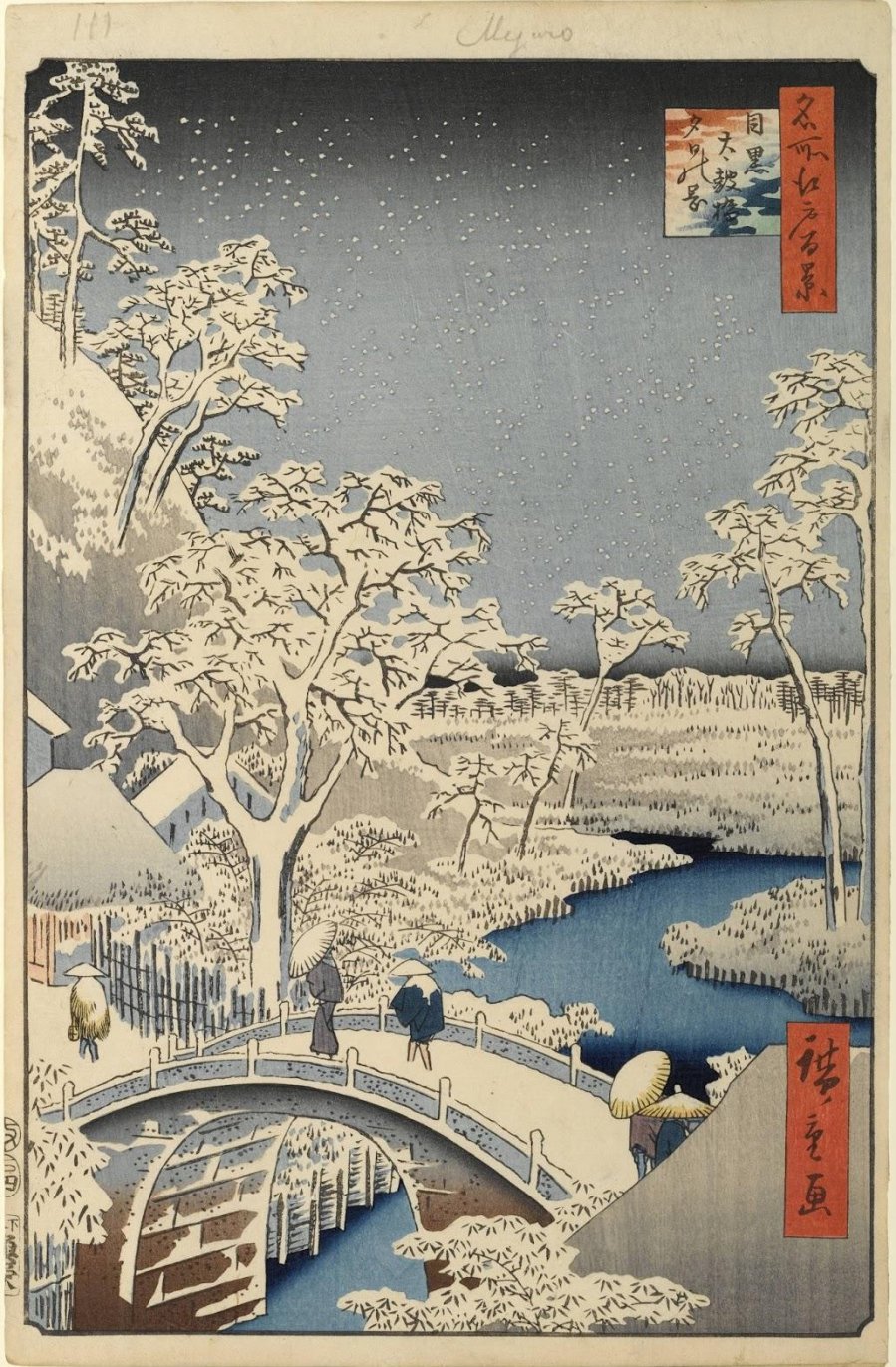
Empty Bridge over Meguro River and Sunset Hill (Hiroshige, 1857)
In the snow-covered winter landscape, the Meguro Bridge stands out with its stone structure instead of the wood of other bridges. The path on the bridge leads to the famous Meguro Shrine dedicated to the Buddhist guardian Fudō Myōō. Before crossing the bridge, in the lower right corner is the roof of the Shōgatsuya teahouse, famous for its sweet bean soup (shiruko mochi). A few travelers walking in the snow are hiding under umbrellas, hats, or raincoats. Behind the houses is the yūhi no oka (sunset hill), which, combined with the river flowing next to it, creates a beautiful view of the Meguro Valley. In terms of color, the white of the snow contrasts with the Prussian blue of the Meguro River, and in the gray sky there are snowflakes created by simply leaving it blank, without applying color.
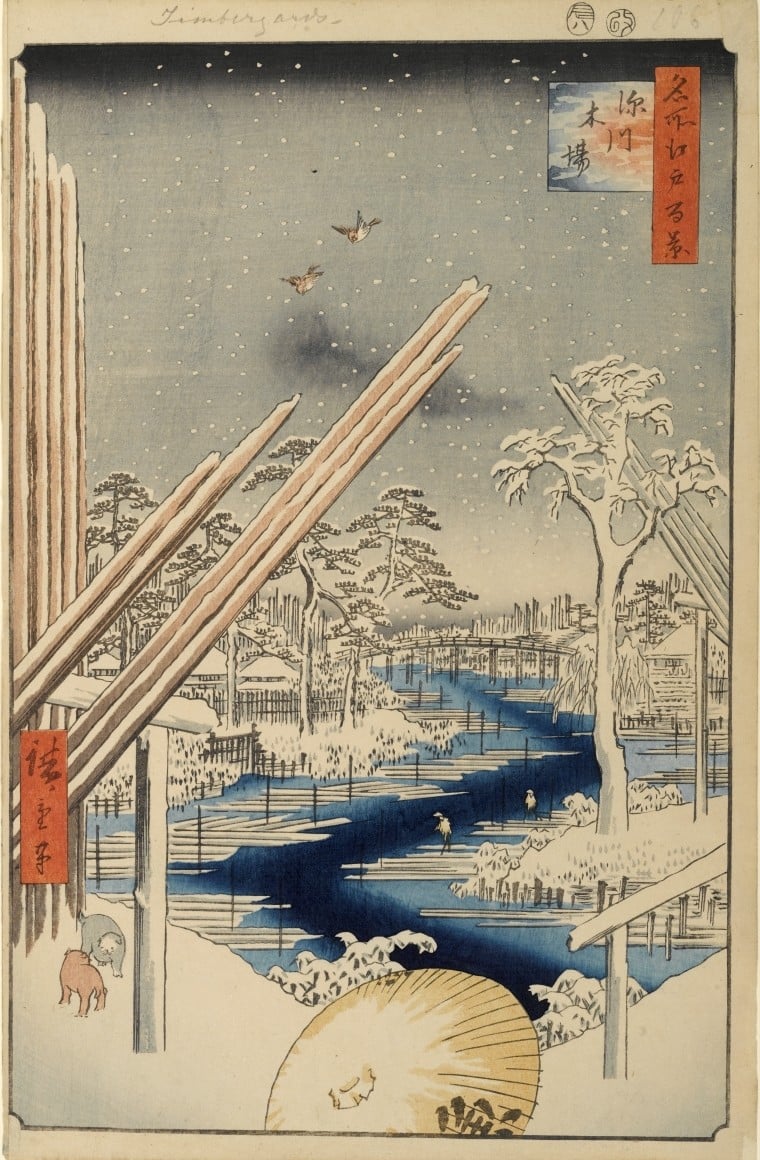
Fukagawa lumber mill (1856)

Kinryūzan Temple in Asakusa (1856)
DrawingKinryūzan Temple in Asakusastart of winter series ofOne Hundred Famous Sights of Edohas a distinctive atmosphere. Kinryūzan Temple, dedicated to the Bodhisattva Avalokitesvara, located in the Asakusa area, is highlighted by a red and green gate called Kaminarimon (Thunder Gate), along with a festive lantern. The view is drawn to the snowy landscape of the temple grounds, with figures approaching. The pagoda on the right and the Niōmon (gate guarded by two deities) in the center, are a fierce red against the white of the snow. The temple had been rebuilt just two months before Hiroshige painted the painting, after the 1855 earthquake. The sky changes from white to black with various shades of gray, interspersed with white dots of snowflakes.
DrawingFukagawa Woodworking Shopequally surprising is the natural landscape completely covered in snow, evoking a cold, desolate image, further emphasized by the cold colors such as the gray sky and the dark blue river water, which further give the scene an icy beauty. Along the riverbank, wood warehouses were placed outside the city to prevent fires, especially in Fukagawa, east of the Sumida River. In the painting, several wooden bars can be seen cutting across the landscape diagonally, from the right and left, combined with the zigzag trajectory of the river to give the image an appearancedynamiccontrary to thestaticof the landscape covered in snow.

Bikuni Bridge in the Snow (1857)
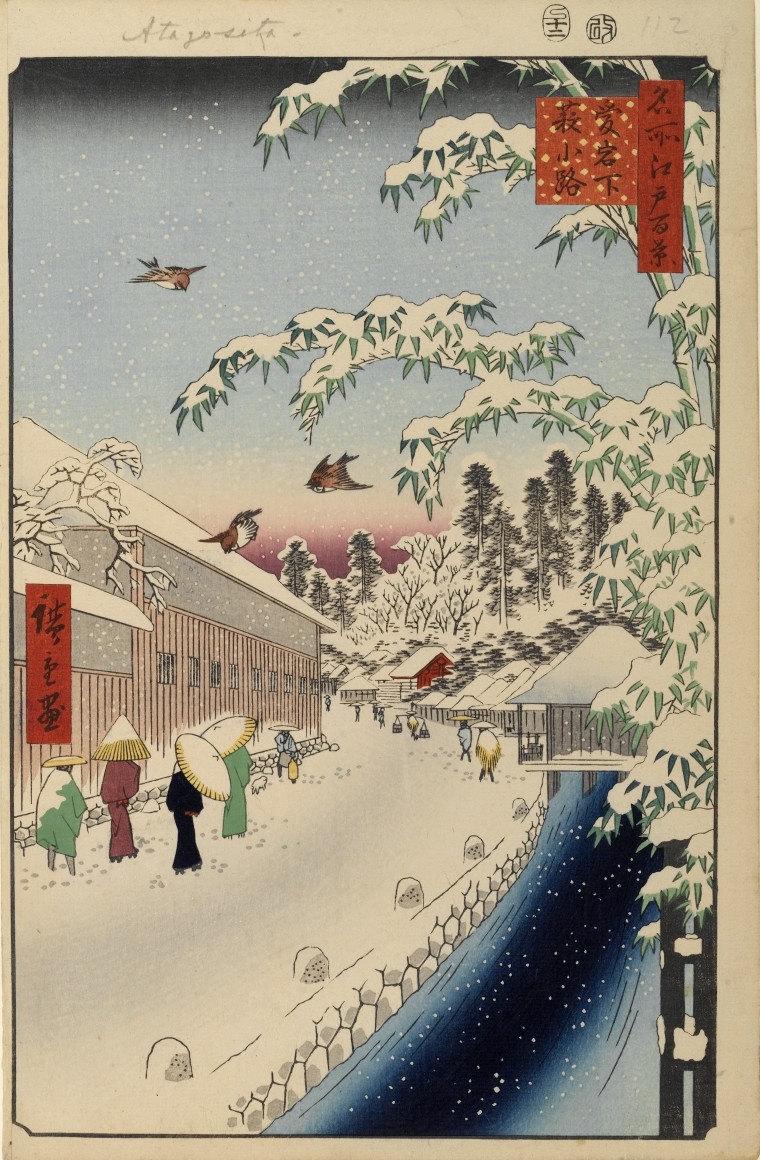
Atagoshita and Yabu Street (1857)
Atagoshita and Yabu Streetis another painting in which snow plays a major role, covering the entire scene. The Atagoshita district lies at the foot of Mount Atagoyama, where many feudal lords' (daimyō) estates were also located. From Yabukōji Street, located to the right of a canal, one can see a tall bamboo tree (yabu), with its branches bent under the snow, and above it, several sparrows flying. Bamboo and sparrows, symbolizing togetherness and peace, are also omens of happiness. Unlike the usual snowy landscapes, the colors in this painting create certain contrasts, such as the dark blue of the canal with the green of the bamboo branches, or the red, pink, white, and light blue tones of the sky, erasing the harsh cold of winter.
Bikuni Bridge in the SnowThe painting depicts a winter night sky, all covered in white, with only a peddler hurriedly crossing the bridge. Bikuni Bridge is located near the moat of Edo Castle, surrounded by many brothels and cheap eateries. On the left side is a sign that readsyama kujira(mountain whale), a euphemism for wild boar meat, which was banned at the time. On the right side were several baskets of yakiimo, a type of whole roasted sweet potato sold on the streets; it tasted better than chestnuts. Everything exuded a very simple and ordinary beauty, like when you were wading through the snow and walking in the middle of a deserted street, suddenly smelling the fragrant smell of grilled meat and roasted potatoes, like the smell of your own kitchen, like comforting a hungry and cold traveler in the middle of a cold and gloomy winter.

The Giant Snow Cat (Utagawa Kuniyoshi, 1847-50)
Winter is not only expressed through sad and lonely scenes, but also the joy of children playing in the white snow. Noble ladies together make snow cats for the prince, barefoot babies in the winter play and eat snow, noble ladies take their children for a walk, graceful and charming courtesans... regardless of background, rich or poor, it is difficult to resist the primitive emotions that rise in the heart when seeing the sparkling white snow of early winter.
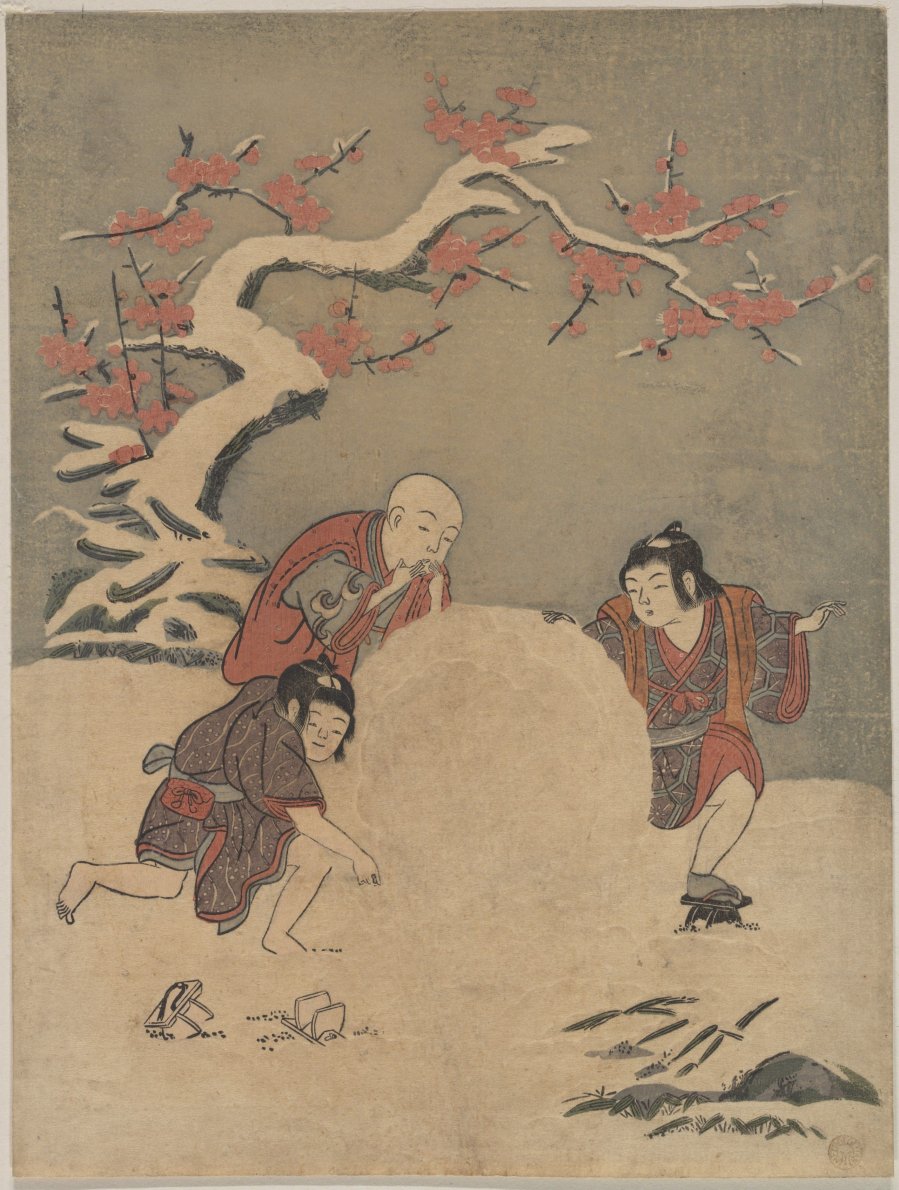
Children Playing in the Snow (Suzuki Harunobu, 1770)
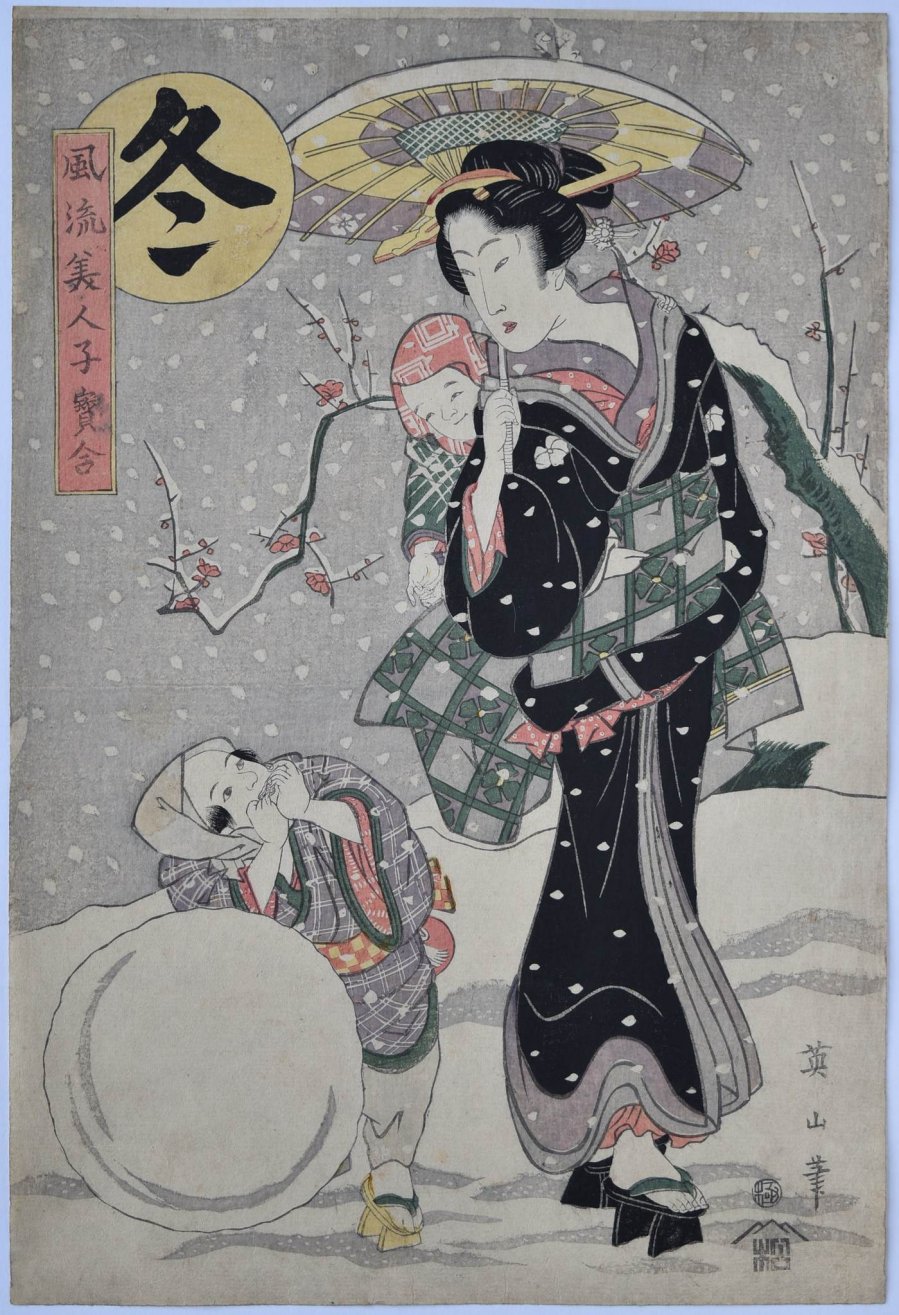
Woman and Children in Winter (Kikugawa Eizan, 1810)
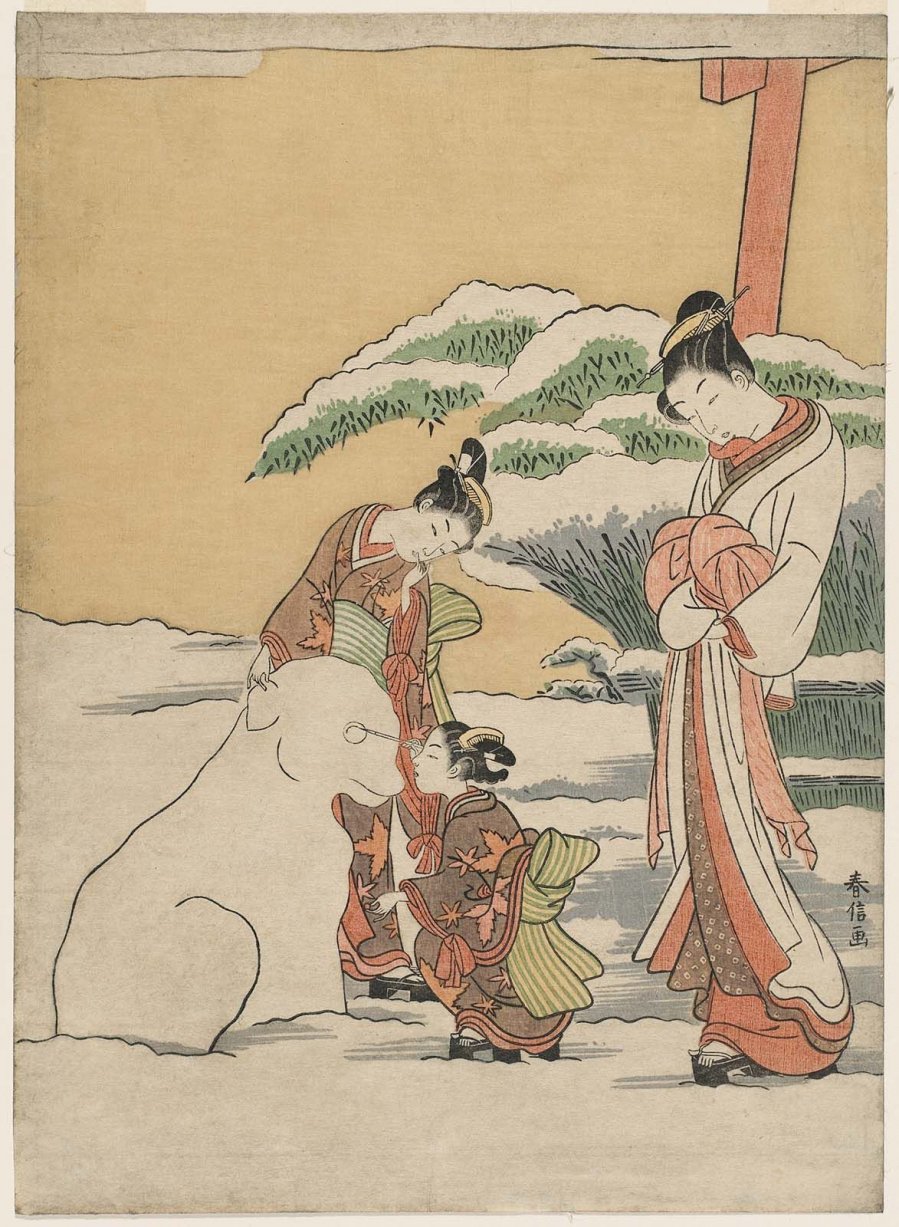
A courtesan watches two maids make snow dogs (Suzuki Harunobu, 1767-68)
Nowadays, when mentioning ukiyo-e, people often think of colorful paintings depicting landscapes and stories of spring, summer, and autumn, but in fact, ukiyo-e also includes paintings of winter scenes. Although not as many as other seasons, winter scenes in ukiyo-e are not monotonous but extremely diverse, expressing all the nuances of life of Japanese people during the Edo period, on the delicate background of Shinto shrines, the quiet scene on deserted streets, or the cheerful laughter of children playing in the white snow.



























